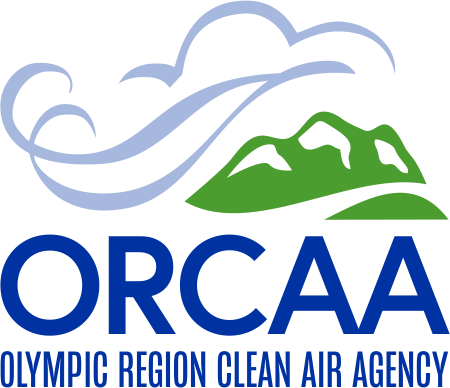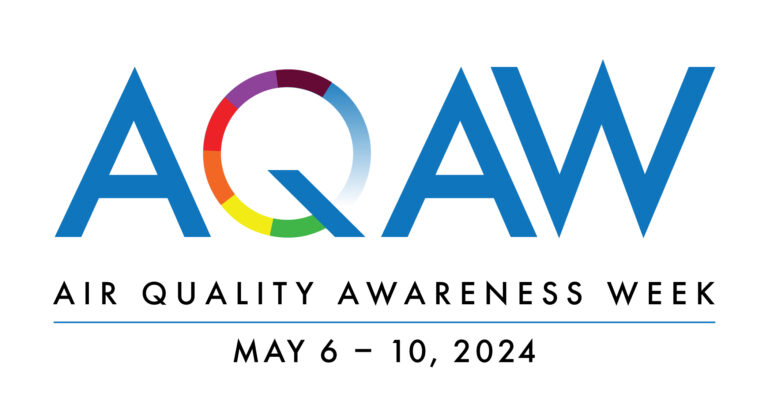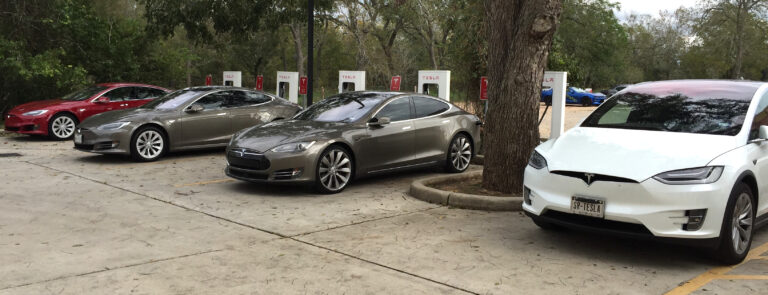
In recent years, our changing climate has not only increased the risk of huge wildfires around the world, but it has alternated our weather patterns enough that western Washington has experienced significant smoke impacts from fires as far away as Alaska, central Canada, and the American Southwest.
This year, the National Interagency Fire Center is forecasting higher-than-normal wildfire danger for most of the western United States. That means our region could be inundated with smoke from large fires again. Smoke from fires can put public health at risk but there are steps that individuals and communities can take to be prepared. All this week, we’ll be offering advice on how to become Smoke Ready before those events occur.
What is Smoke?
Smoke from wildfires (and from local sources of wood-burning such as wood stoves, recreational fires, yard-waste burning, and land clearing burns) comprises many elements. The primary component of smoke, though, is particulate matter (PM) and the biggest concern is fine particulate matter or PM2.5. The 2.5 refers to particles 2.5 microns and smaller. (see graphic for illustrated size comparison). Other components of smoke include ozone, carbon monoxide, carbon dioxide, volatile organic compounds (VOCs), and nitrogen dioxide.
 Breathing wildfire smoke can have serious consequences for human health. Exposure to smoke from wildfire is known to affect lung health and has been associated with respiratory infections (influenza, bronchitis, and pneumonia), and increased risk of mortality (a recent EPA study estimated annual mortality in the US due to exposure to smoke of 1,500-2,500 people). Every community, no matter the size, has someone who is potentially at risk from breathing smoke. Those who are especially vulnerable include people with underlying conditions such as heart or lung disease, asthma, diabetes, pregnancy, young children, and older adults. Individuals with COVID-19, or recovering from COVID-19, are also at greater risk from smoke.
Breathing wildfire smoke can have serious consequences for human health. Exposure to smoke from wildfire is known to affect lung health and has been associated with respiratory infections (influenza, bronchitis, and pneumonia), and increased risk of mortality (a recent EPA study estimated annual mortality in the US due to exposure to smoke of 1,500-2,500 people). Every community, no matter the size, has someone who is potentially at risk from breathing smoke. Those who are especially vulnerable include people with underlying conditions such as heart or lung disease, asthma, diabetes, pregnancy, young children, and older adults. Individuals with COVID-19, or recovering from COVID-19, are also at greater risk from smoke.
Being smoke-ready means that communities and individuals have the knowledge and ability to stay reasonably safe and healthy during smoke episodes. Some approaches individuals can take include creating a “clean room” at home, purchasing an air filter, knowing how to determine current air quality, minimizing indoor sources of air pollution, and limiting time outdoors when it’s smoky.
Communities can act to be smoke ready by creating clean air shelters, educating residents to understand the health risks of smoke and how to access decision tools, and having resources on hand to help vulnerable and under-served residents.
Check back tomorrow for details on how to Protect Your Health during community-wide Wildfire Smoke Events.


